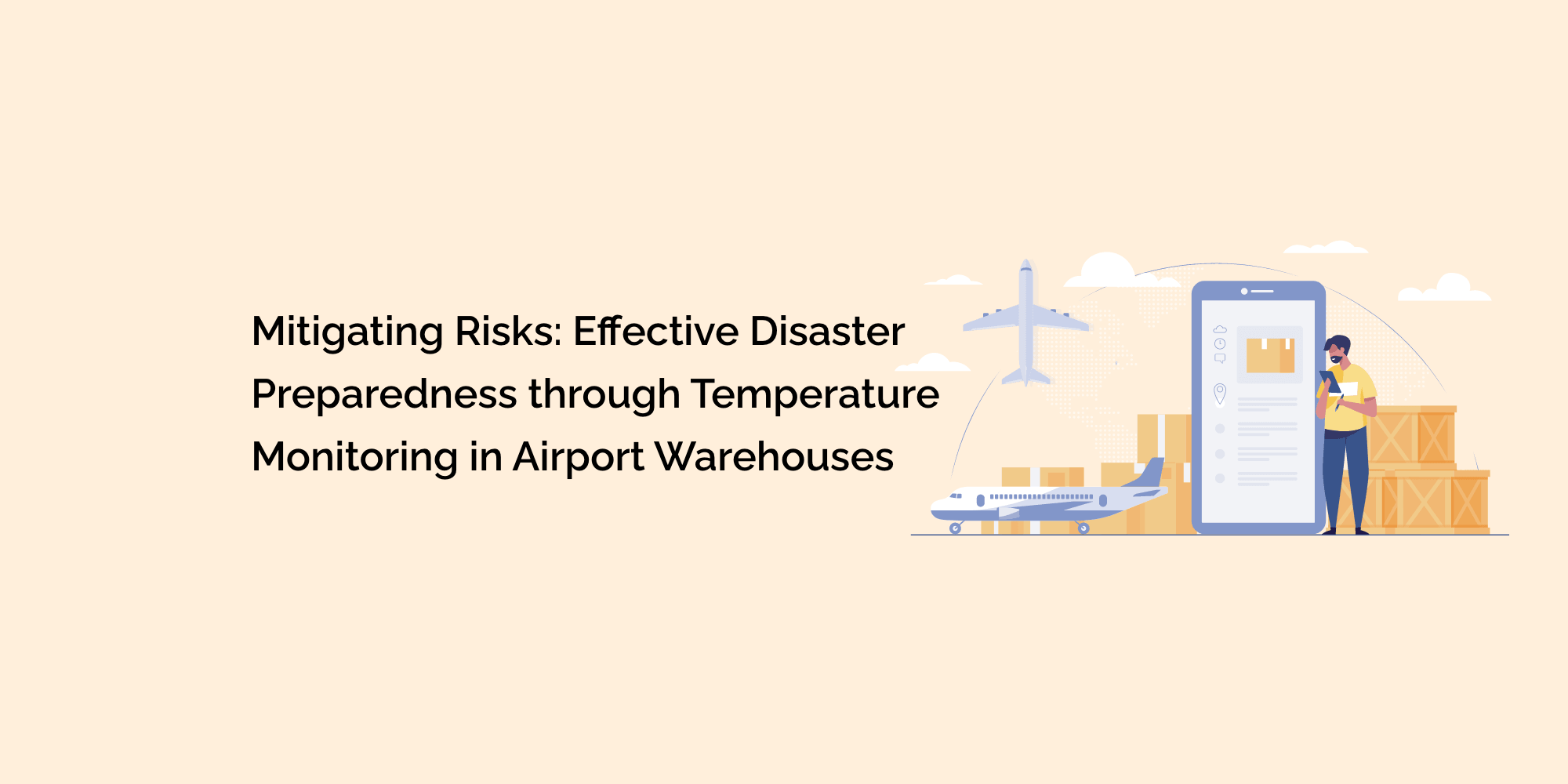Airport warehouses serve as crucial nodes in the global supply chain, handling a diverse range of goods, including perishable and temperature-sensitive items. Maintaining optimal temperature conditions is essential to preserving the quality and safety of these goods during storage and transportation.
However, the failure to monitor and control temperature effectively can lead to disastrous consequences, such as spoilage, product losses, and regulatory non-compliance.
In this comprehensive blog, we delve into the significance of disaster preparedness in airport warehouse operations, the risks associated with temperature fluctuations, and the role of effective temperature monitoring in mitigating these risks.
-
The Importance of Disaster Preparedness in Airport Warehouses
Disasters, whether natural or man-made, can strike at any time, threatening the smooth functioning of airport warehouse operations. As airports handle time-sensitive goods, such as pharmaceuticals and fresh produce, even a slight deviation in temperature can lead to significant financial losses and compromise product integrity. Disaster preparedness is essential to ensure that airport warehouses can withstand and recover from potential disruptions caused by temperature-related incidents.
-
The Risks of Temperature Fluctuations in Airport Warehouses
a. Product Spoilage:
Perishable goods and temperature-sensitive items are highly susceptible to spoilage when exposed to improper temperature conditions. Fluctuations in temperature, especially in extreme weather conditions, can accelerate product decay, rendering them unfit for consumption or use.
b. Regulatory Non-Compliance:
Airport warehouses dealing with pharmaceuticals, medical supplies, and food products must comply with strict temperature regulations. Failure to maintain the required temperature range can result in regulatory non-compliance and legal repercussions.
c. Financial Losses:
Product spoilage and regulatory fines can lead to significant financial losses for airports and logistics providers. Additionally, disruptions in warehouse operations due to temperature-related incidents can result in missed deadlines and lost revenue.
d. Reputational Damage:
Mishandling of temperature-sensitive goods can tarnish an airport's reputation, leading to a loss of trust among suppliers, airlines, and customers.
-
Disaster Preparedness Strategies for Airport Warehouses
a. Temperature Monitoring Systems:
Implementing robust temperature monitoring systems is the first line of defense against temperature-related disasters. Automated sensors continuously monitor temperature conditions, providing real-time data and instant alerts in the event of deviations.
b. Redundancy and Backup Systems:
Redundancy measures, such as backup power sources and redundant HVAC systems, ensure that temperature control is maintained even during power outages or equipment failures.
c. Contingency Planning:
Developing comprehensive contingency plans for various disaster scenarios helps airport warehouses respond promptly and effectively. These plans should include protocols for temperature control, communication channels, and evacuation procedures if necessary.
d. Staff Training and Awareness:
Training warehouse staff in disaster preparedness and temperature monitoring protocols is crucial for timely and effective response during emergencies.
e. Collaboration with Regulatory Authorities:
Establishing open lines of communication with regulatory authorities ensures that airport warehouses stay informed about the latest temperature regulations and compliance requirements.
-
The Role of Effective Temperature Monitoring in Disaster Mitigation
a. Real-Time Data Insights:
Continuous temperature monitoring through automated sensors provides warehouse managers with real-time data insights. This allows for quick identification of temperature fluctuations and immediate corrective action to prevent product spoilage.
b. Predictive Analytics:
AI-driven predictive analytics can anticipate potential temperature deviations based on historical data. This proactive approach enables warehouses to take preventive measures, minimizing the risk of disasters.
c. Remote Monitoring:
IoT-enabled temperature monitoring systems allow warehouse managers to monitor temperature conditions remotely. This capability is especially valuable in disaster scenarios where physical access to the warehouse may be restricted.
d. Alert Systems:
Automated alert systems promptly notify relevant personnel of any temperature anomalies, enabling swift responses and minimizing the impact of potential disasters.
-
Case Studies of Disaster Mitigation through Effective Temperature Monitoring
a. Hong Kong International Airport:
Hong Kong International Airport implemented an advanced temperature monitoring system for its cargo warehouses. The system's real-time data insights and predictive analytics capabilities led to a 60% reduction in temperature-related incidents, significantly mitigating the risk of disasters.
b. Dubai International Airport:
Dubai International Airport integrated remote temperature monitoring solutions that allowed for continuous monitoring of its cargo warehouses from a centralized control room. This capability proved instrumental in quickly identifying and resolving potential temperature fluctuations, safeguarding temperature-sensitive goods.
Conclusion
Effective disaster preparedness through temperature monitoring is essential for mitigating the risks associated with temperature fluctuations in airport warehouses. Implementing robust temperature monitoring systems, utilizing predictive analytics, and developing comprehensive contingency plans are vital steps towards ensuring warehouse resilience.
With real-time data insights and remote monitoring capabilities, airport warehouses can respond swiftly to potential disasters, minimizing financial losses, preserving product quality, and upholding regulatory compliance.
By prioritizing disaster preparedness and investing in cutting-edge temperature monitoring technologies, airports can safeguard their operations and build resilience in an ever-changing and unpredictable world.








